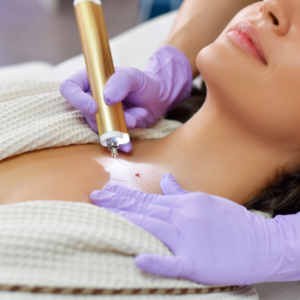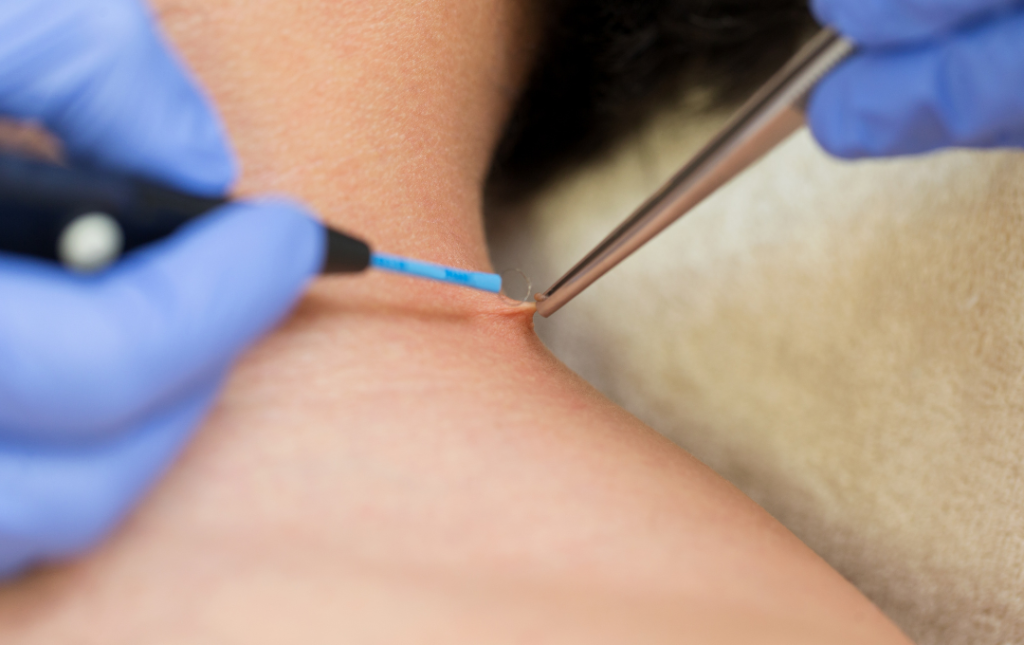Skin tags are typically harmless skin growths that appear as small, soft, benign growths. While they are generally harmless and painless, some people may wish to have them removed for cosmetic reasons or if they become irritated. In these cases, it is best to consult with a dermatologist who can determine the best way to remove the skin tag safely and effectively.
 The most common methods of skin tag removal in Warrington include cryotherapy, excision, and laser treatment. Depending on the size and type of skin tag. A dermatologist will recommend the best option for the removal of your skin tag. After successful treatment, there is usually no scarring or other side effects. However, if you have any concerns about skin tag removal, it’s always best to consult with a qualified medical professional before making a decision.
The most common methods of skin tag removal in Warrington include cryotherapy, excision, and laser treatment. Depending on the size and type of skin tag. A dermatologist will recommend the best option for the removal of your skin tag. After successful treatment, there is usually no scarring or other side effects. However, if you have any concerns about skin tag removal, it’s always best to consult with a qualified medical professional before making a decision.
Additionally, if you have a skin tag that is changing rapidly in size or shape, it’s best that you consult with a dermatologist as this may be an early sign of skin cancer. It is also important to note that self-removal of skin tags can cause infection and should not be attempted without supervision.
Although they’re usually painless and it will cause you no medical problems, they can be unsightly or bothersome to other people. While it is not always necessary to have a dermatologist remove a skin tag, it may be beneficial for certain cases.
 For instance, if the skin tag is located in an area that’s difficult to reach or prone to infection, such as the groin or armpit, it may be best to have a dermatologist remove it. In addition, some people may find skin tags bothersome and choose to have them removed for aesthetic reasons.
For instance, if the skin tag is located in an area that’s difficult to reach or prone to infection, such as the groin or armpit, it may be best to have a dermatologist remove it. In addition, some people may find skin tags bothersome and choose to have them removed for aesthetic reasons.
A dermatologist should be consulted if the skin tag is unusually large, causes persistent irritation or bleeding, or appears atypical in any way. In these cases, a physician can perform a biopsy to rule out any underlying skin problems. A dermatologist may also remove the tags with cryosurgery—freezing them off with liquid nitrogen—or by cutting them off with scissors. If the skin tag is small and doesn’t present any problems, it can often be left alone or removed at home.
For those who wish to remove the tags on their own, this can be done with products available over-the-counter or online. These products work by cutting off the blood supply to the tag and eventually causing it to fall off. However, these methods may not be suitable for people with sensitive skin, and a doctor should always be consulted.
Conclusion
it is not necessary for everyone to have a dermatologist on their skin tags. However, may be beneficial in some cases when the tags are large or cause discomfort. If you are considering removing your own skin tag, always consult with a physician first to ensure it is safe. Additionally, always follow the manufacturer’s instructions for the use of any over-the-counter treatments. Taking these precautions will help reduce potential risks and complications associated with skin tag removal.

